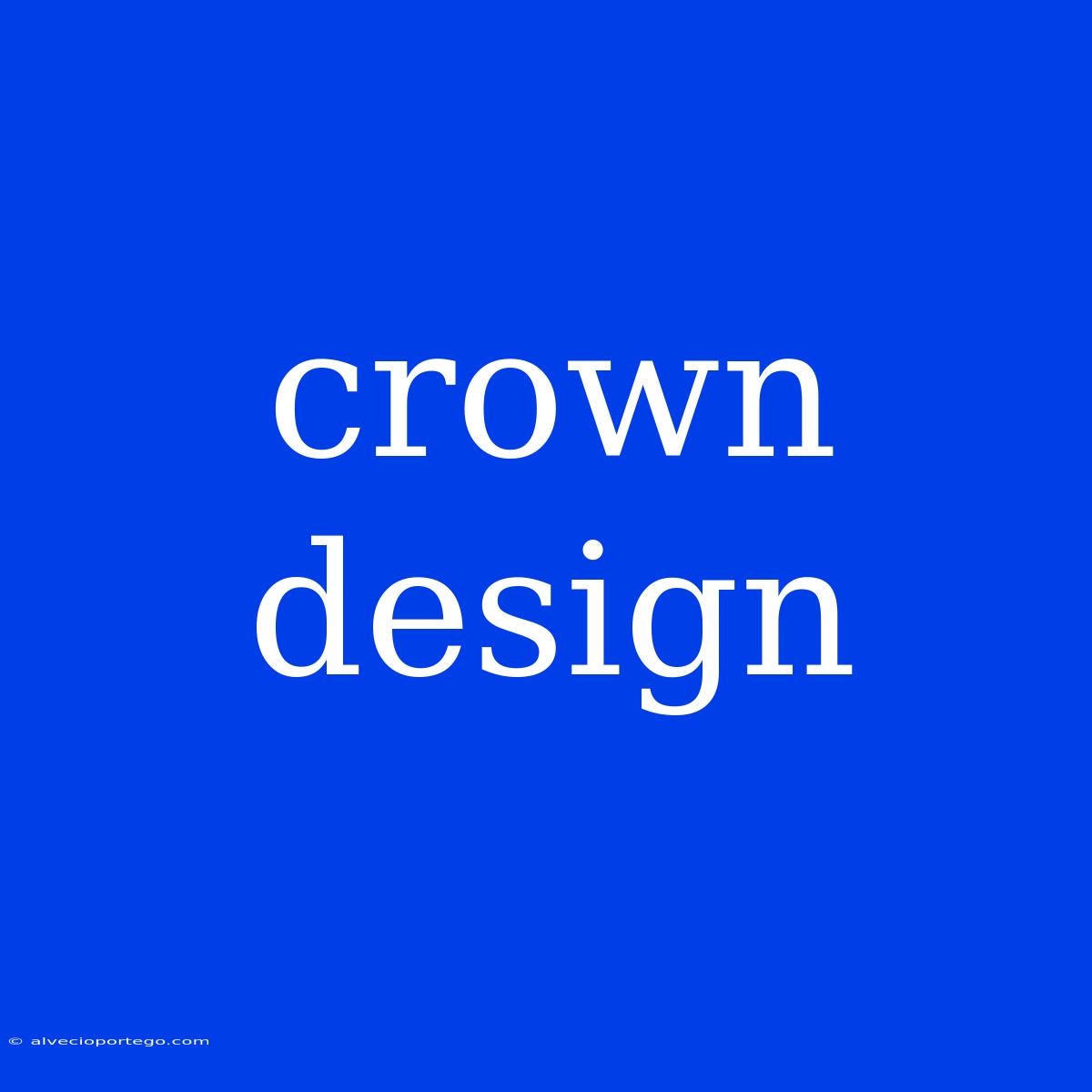Crown Design: A Symbol of Power and Elegance
Crowns, throughout history, have been symbols of royalty, power, and prestige. From the ancient Egyptian pharaohs to the modern-day monarchs, crowns have been a constant in human civilization. But beyond their symbolic significance, crown design is also an art form, reflecting different cultures, eras, and artistic trends.
The Evolution of Crown Design:
Ancient Crowns:
- Ancient Egypt: The crowns of ancient Egypt, such as the Double Crown (combining the Red Crown of Lower Egypt and the White Crown of Upper Egypt) and the Blue Crown, were often adorned with intricate patterns, feathers, and symbols of the gods.
- Mesopotamia: Mesopotamian crowns were typically conical in shape, sometimes decorated with metal plates, gems, or feathers.
- Ancient Greece: Greek crowns were often made of laurel, olive branches, or ivy, symbolizing victory and peace.
Medieval Crowns:
- European Monarchs: The crowns of European monarchs became increasingly elaborate during the Middle Ages, featuring arches, crosses, and precious stones. The iconic fleur-de-lis, a symbol of French royalty, was prominently displayed on many medieval crowns.
- Byzantine Empire: Byzantine emperors wore elaborate crowns often adorned with gold, pearls, and precious stones, reflecting the wealth and power of the empire.
Renaissance and Beyond:
- Renaissance: The Renaissance saw a renewed interest in classical art and design, influencing crown designs to be more symmetrical and balanced.
- Baroque Era: The Baroque period witnessed the use of extravagant ornamentation and bold designs in crown making.
- Modern Crowns: Modern crowns are often designed with a more minimalist approach, emphasizing simplicity and elegance.
Elements of Crown Design:
- Shape: The shape of a crown varies greatly depending on its origin and the era. Common shapes include conical, arched, and open.
- Materials: Crowns have been crafted from a wide range of materials, including gold, silver, platinum, jewels, pearls, feathers, and even animal skulls.
- Ornamentation: Crowns are often adorned with intricate designs, including floral motifs, crosses, religious symbols, and heraldic emblems.
The Meaning Behind the Design:
- Religious Symbolism: In many cultures, crowns have been associated with divinity and spiritual power.
- Royal Authority: Crowns are a symbol of royal authority and power, signifying the monarch's right to rule.
- Social Status: Crowns have also been used to denote social status and rank within societies.
Crown Design Today:
- Modern Designs: Contemporary crown designs often reflect the modern aesthetic, incorporating geometric shapes, minimalist details, and innovative materials.
- Cultural Significance: Crown design remains relevant in modern society, continuing to hold cultural significance and inspiring artistic expressions.
From ancient symbols of divinity to modern expressions of artistry, crown design continues to captivate and inspire. It is a reminder of the enduring human fascination with power, elegance, and the pursuit of beauty.

